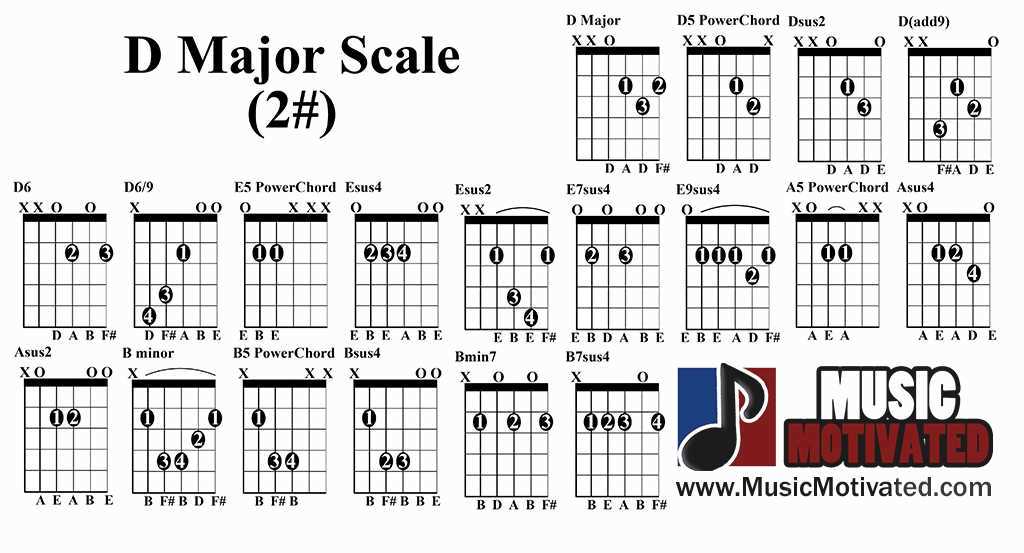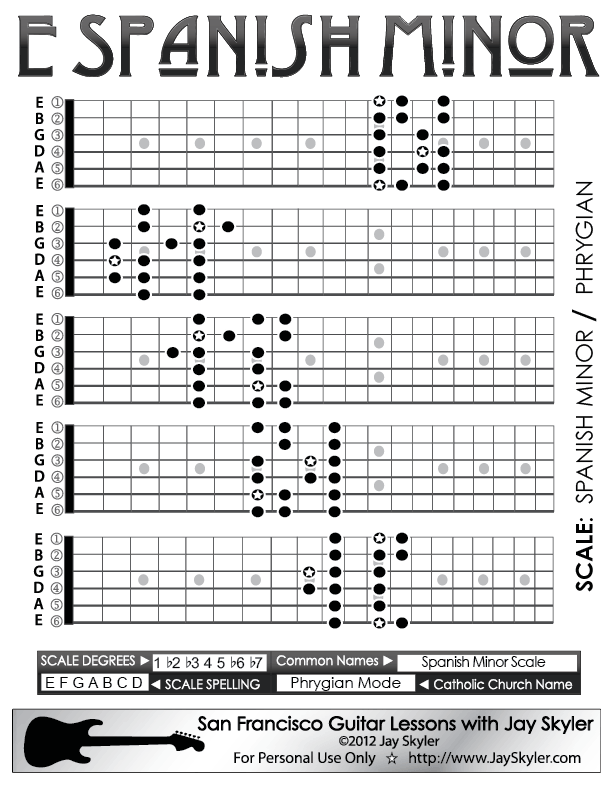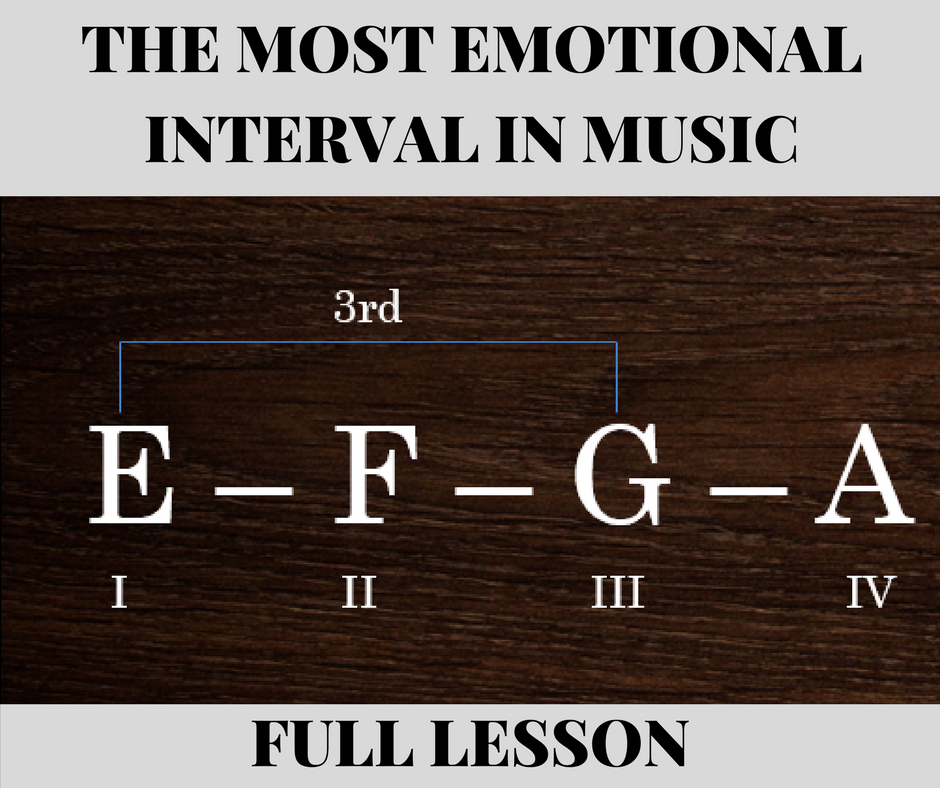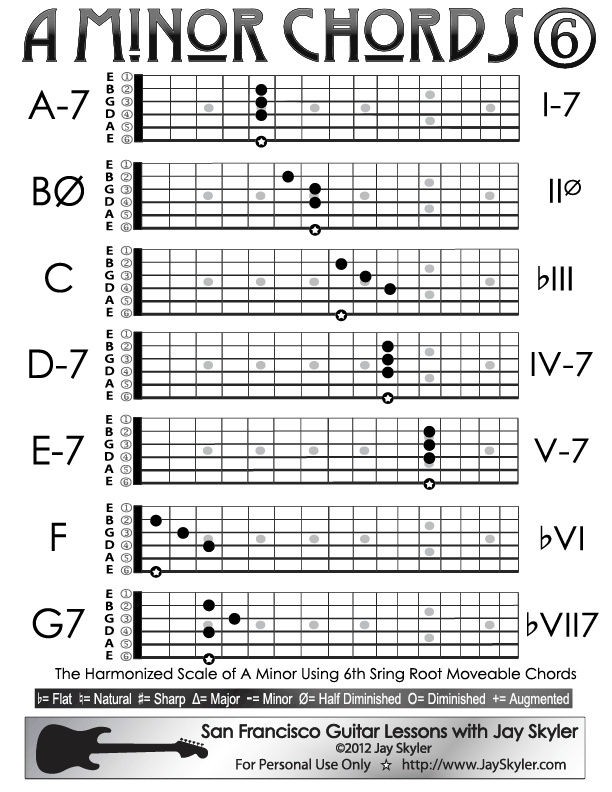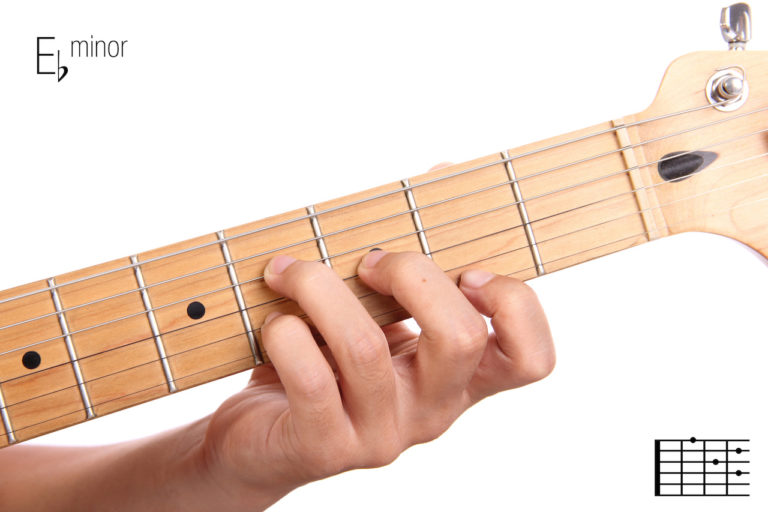As important as it is to learn major scales on the guitar, it's equally as important to learn their counterparts -- the minor scales. The G minor scale is perfect for guitarists looking to add emotion and uneasiness to their playing. There are three different minor scale patterns – natural minor scale, the harmonic minor scale, and the melodic minor scale. And just like the popularity of most major scales , G minor is also frequently incorporated into a number of your favorite songs. When you stack 3rds on each note of a scale, you get the so called diatonic chords of that scale. Carried out that way, you will get minor chords on the II.
CDEFGABEach degree also maps to a particular chord. If you use only these chords, you are playing a diatonic harmony or a diatonic chord progression. You will notice that the upper-case numerals use major chords and the lower case numerals use minor chords. The vii is diminished, which includes a b3 so it is also lower case. It is called diminished instead of minor because it also has a flatted fifth.
You will quickly discover that real-life music rarely sticks exclusively to the major and minor keys. There's a common device called modal interchange, where you have a major-key song that borrows from the parallel minor key, or vice versa. In C major, your song will sound a lot more interesting if you bring in chords from C minor. It's also pretty common to have a song that's in C minor everywhere except for the actual root chord, which will be C major instead. It sounds like a weird idea, but it's a very common songwriting technique.
I have one question if you dont mind me asking… I learned all 7 mode shapes 3 notes per string. For instance in the key of G major the phrygian shape falls on a B and aeolian on an E. Do i just play that scale pattern from that note, or do i have to start on the root of the chord im soloing over? Ive often thought in the key of g major that you have g Ionian, A dorian, B phrygian, C Lydian, D mixolydian, E aeolian, and F# locrian. Besides the natural minor scale, the melodic and harmonic scales can also be used as a fundament for chords progressions.
The harmonic minor differs from the natural minor with a raised seventh; the melodic minor differs from the natural minor with raised sixth and seventh. Still, the majority of songs written in minor keys use the natural minor. Naturally, you will have twelve more chord families that are built like this i, ii⁰, III, iv, v, VI, VII. And these are the chord families for the natural minor scale.
What Chords Are In The Key Of G Minor This is one of the most popular modes besides the Ionian one since most of the songs are either in the major or minor key. The chart below uses the chord numbering system to show the relationship of guitar chords in all the major keys. Find a key in the left column and the chords that belong to the key are shown in the corresponding row.
All the chords listed in the row for the key of G will sound nice when played together in various chord progressions. This step shows how to identify the notes and the name of a triad chord whose root note is the 7th scale degree of the G melodic minor scale. This step shows how to identify the notes and the name of a triad chord whose root note is the 6th scale degree of the G melodic minor scale. This step shows how to identify the notes and the name of a triad chord whose root note is the 5th scale degree of the G melodic minor scale. This step shows how to identify the notes and the name of a triad chord whose root note is the 4th scale degree of the G melodic minor scale.
This step shows how to identify the notes and the name of a triad chord whose root note is the 3rd scale degree of the G melodic minor scale. This step shows how to identify the notes and the name of a triad chord whose root note is the 2nd scale degree of the G melodic minor scale. This step shows how to identify the notes and the name of a triad chord whose root note is the 1st scale degree of the G melodic minor scale. The guitar is complicated and we need to have ways to process the information as quickly as possible. I like to keep the key's major scale in mind and shift my thinking to play relative to the root of the chord.
For example, if you are in the key of G major and a B chord is being played, I would focus my playing as if B were the root while the B chord is being played. You don't have to start on the B to play a mode, but it likely played. Since the B chord, would be formed by every other note starting with B, you can find the chord tones easily (B-D-F#-A for Bm7)! When playing guitar, you can learn the simple rule that works but takes longer to apply, or you can learn a more complicated rule that is easier to recall and communicate. How long does it take to think in C major but shift the notes based on the chord?. If the chords progression goes out-of-key, how hard is it to find the scale or mode that you want?
When discussing what you're playing, how hard is it to explain that you're playing off the 2nd of C major versus playing D Dorian? My point is that you don't need modes, but they're a useful tool that can help. Generally, it isn't useful to name a key differently than major or minor.
However, if you said you're playing D dorian, you'd imply the key of C, but you'd probably play the chords as if they were relative to D dorian. I recommend playing the I, IV, and V chords of a mode and judging for yourself. In my opinion, the diatonic series can be applied to the modes. You learned that the modes relate to the degree of the major scale. Now you will learn that the modes use the same exact notes as the major scale.
They are remembered by their tonal centers, which are different than the major scale's tonal center . The table below shows the modes in a series as they relate to the key. One method of playing the modes is to use the major scale , but select your notes based on the mode shift. In this guitar theory lesson, we're going to learn how to find the chords in a major key.
This is very important for when you start writing your own songs and when you want to figure your favorite songs out for yourself. It's important to note that the first step to knowing which chords occur in a major key is having a good understanding of the major scale. I understand what you are saying, but I don't understand why it matters. It's the same C major scale notes, all that matters is how you pick them to play from one chord to the next. What gives it the atmosphere of the mode is the chord under the scale tones and the fact that you keep returning to a note other than the tonic, in this case "e".
I know I will look back and laugh at this someday, but this is where I get stuck in thinking about it. I hear tell that by thinking of it as a different scale it leads you to different ideas. IonianDorianPhrygianLydianMixolydianAeolianLocrianYou learned that diatonic chords all gravitate toward the tonic .
When you play a chord, the notes within that chord gravitate toward the root of the chord. The feel changes because of the harmony it is played over. In other words, the chord progression relates to the song's gravity.
When played properly, it will highlight the chord and its harmony. I will go over how to play them properly later in this lesson. When you add a minor seventh to a major chord you get a seventh chord; in this case we have added F to make G7. We used figure 2 as a starting point, but it works with figure 1 as well.
G7 is chord V in C, so try playing a C major chord after G7 and you'll hear chord V resolving to chord I. This works because the tension between the notes B and F in the G7 chord is resolved when they arrive on C and E. Let's go a step further and move everything for one more space. We will have now H, F, F, F, H, F, F, F. This is the third mode and it's called Phrygian Mode.
In the example of C major, we will get C, bD, bE, F, G, bA, bB, C. The chords in the Phrygian family are i, II, III, iv, v⁰, VI, VII. This way you can build the Phrygian family of chords for any of the twelve notes of the chromatic scale. The chords in Dorian mode are like this i, ii, III, IV, v, vi⁰, VII. The first chord is minor, the second one is also minor, the third and fourth are major, the fifth one is minor, the sixth is diminished, and the seventh one is major. As you can see, everything is changed, and the whole scale will be a minor one just because we changed the order of the full steps and half steps. We already know the C major scale and the reason we use it always is that there are no half-steps on the scale.
If you would play this on a piano, you would play only white keys starting from C. However, when it comes to the Dorian scale, D Dorian would go like this D, E, F, G, A, B, C, D. So the schematics to create any major scale are F, F, H, F, F, F, H, F. Where F means full step, and H means half a step.
This major scale is also known as the Ionian mode or the first mode where we will start everything. In Western classical music, the idea is pretty straightforward. Each major key is generated entirely from a major scale. If you pick any note from the scale and then go up skipping every other note, you get a chord.
The seven chords you can get from the C major scale this way are C major, D minor, E minor, F major, G7, A minor and B diminished. Taken together, these are the chords that comprise the key of C major. Because they consist entirely of notes from the C major scale, you can use the C major scale over all of them, and everything will fit.
Be aware that not every note will sound equally good in every situation, you need to use your ear for that. Diatonic harmony is about knowing the chords that come from a key. Keys have a tonal center, or tonic, which the harmony will gravitate towards. Chord progressions within a key are considered diatonic chord progressions. They contain chords which only use the notes of the key. There are a few more things to know, but let's make sure we know enough about keys and diatonic harmony.
As you see, the 3rd, 6th, and 7th notes in the minor scale are "flatted" respect to the major scale. The chords symbols just refer to this fact, warning us that their root notes are lower than what we would expect from a major scale. In other words, with the symbol III we would indicate an E major chord, so we need to specify the flat in front of it as bIII to indicate the Eb chord. Three of the keys share notes with three other keys, they are called enharmonic. They may look the same on a guitar or piano, but look very different in sheet music.
C♭ Major and B Major are enharmonic, C♯ Major and D♭ Major are enharmonic, and F♯ Major and G♭ Major are enharmonic, sharing notes on a guitar. C Major is the best key to study the patterns of chords, as there are no extra sharps and flats to contend with, counting out notes in the scale is easier. It is nice to have all fifteen keys for reference, but in practical use a guitarist may only play a few of these keys. Guitar is easier to play when at least some of the open strings are in the key.
Phrygian mode is a minor scale that has a Flamenco or Middle Eastern feel. Lydian mode is a major scale with a floating, dreamlike quality. Jazz and the brainier forms of metal use the melodic minor scalewhose chords and modes are wonderfully freaky.
Fortunately, none of these scales are as common in rock and pop as the ones above. To identify the triad chord note names, use the 1st, 3rd, and 5th columns / scale degrees, which are notes F#, A, and C. To identify the triad chord note names, use the 1st, 3rd, and 5th columns / scale degrees, which are notes E, G, and Bb. To identify the triad chord note names, use the 1st, 3rd, and 5th columns / scale degrees, which are notes D, F#, and A. To identify the triad chord note names, use the 1st, 3rd, and 5th columns / scale degrees, which are notes C, E, and G.
To identify the triad chord note names, use the 1st, 3rd, and 5th columns / scale degrees, which are notes Bb, D, and F#. To identify the triad chord note names, use the 1st, 3rd, and 5th columns / scale degrees, which are notes A, C, and E. To identify the triad chord note names, use the 1st, 3rd, and 5th columns / scale degrees, which are notes G, Bb, and D.
A minor scale differs slightly from a major scale in that degrees 3, 6 and 7 are all flattened, so they are lowered by one semitone. It's an incredibly popular chord progression in rock music. It's used in Stairway to Heaven during the solo, and too many other songs to name. It typically goes like this…Am-G-F-G-Am, and repeats. It's a great progression to solo over, using a minor pentatonic or natural minor scale. The chord progression we just found is a bit difficult to play on the guitar, due to the fact that all these chords are bar chords.
We can make it simpler by keeping the same numbers but using a different key. The same progression in the key of Am becomes Am G C Em, which is way easier to play. The G minor chord is a very popular chord on the guitar. The chord actually contains two notes that can be played on open strings , which means that you can technically play the Gm chord as an open chord . However, the open version of Gm is somewhat awkward, and almost never used.
Instead, Playing Gm as a bar chord on the 3rdfret, is a much more common way of playing the chord. Furthermore, the rules are meant to be broken and there are so many musicians that stepped out of these rules to create something beautiful and inspiring. That takes care of standard practice from classical music. But now you need to deal with a whole other harmonic universe, the modes. The C Mixolydian mode is C, D, E, F, G, A, and B-flat. The chords you get from this scale are C7, D minor, E diminished, F major, G minor, A minor, and Bb major.











